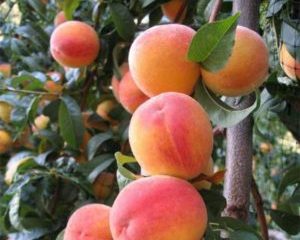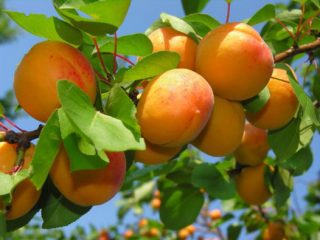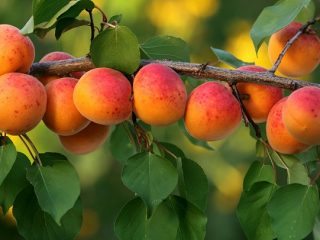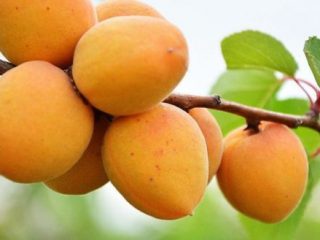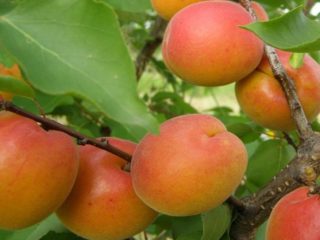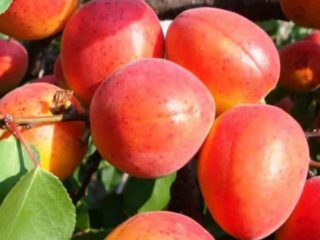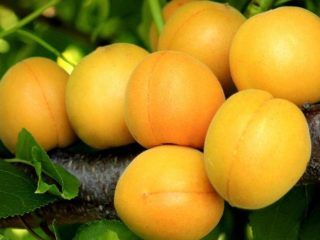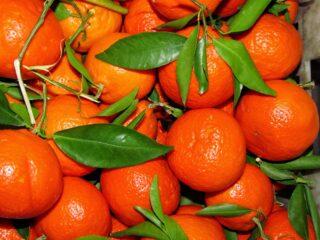Content
The description of the Manitoba apricot variety is of interest to most gardeners. This fruit tree has many advantages, but practically no disadvantages. The variety is resistant to cold, drought and disease, and produces a good harvest. It is important to plant the apricot correctly and provide it with comprehensive care.
History of selection
Apricot "Manitoba" is a late Canadian variety. It received its name from the province of the same name in Canada, where it was bred in 1945. The selection was carried out by the Morden Agricultural Station.
The Manitoba variety is a hybrid. To create it, apricots “Makkle” and “Scout” (Siberian-Manchurian group) were crossed.
Description of the Canadian late apricot variety Manitoba
Apricot "Manitoba" is a strong and tall fruit tree. The main characteristics of the variety are:
- tree height up to 5 m;
- thick and spreading crown;
- shortened shoots;
- long oval leaves with deep serrations and a pointed tip, light green color;
- voluminous flowers, pink tint, strong and pleasant aroma with notes of honey;
- high decorative effect with mass flowering - the crown resembles sakura in the shape and size of the inflorescences;
- large fruits (45 g), they can reach 95-105 g with proper agricultural technology;
- have a bright orange color when ripe late, there may be a slight blush covering up to 10% of the surface;
- fruits are ovoid;
- the pulp has medium density and moderate juiciness, a very delicate and sweet taste with a slight sourness;
- The stone is large (7-8% of the mass of the apricot), has a bitter kernel, and is located freely inside.
The photo of Manitoba apricots shows that the skin is noticeably pubescent. This makes the surface of the fruit velvety to the touch.

Inside the Manitoba fruit there is a seed that has no bitterness.
Characteristics
Apricot "Manitoba" is attractive for its unpretentiousness. Before planting, you should study its main characteristics.
Drought resistance, winter hardiness
This variety exhibits relative drought resistance. The Canadian province of Manitoba has a sharply continental climate, which had a good effect on the apricots bred there. This variety feels great in central Russia and does not require shelter for the winter. It belongs to winter hardiness zone 4 and survives frosts well down to -29-34 °C.
This variety has a long period of deep winter dormancy. Flower buds also have good frost resistance.
Pollination, flowering period and ripening time
Apricot "Manitoba" is self-fertile, that is, it does not require pollinating trees. To increase the number of ovaries, the following varieties are recommended:
- Pineapple.
- Dessert.
- Northern Triumph.
Flowering of "Manitoba" occurs in April-May. The timing of fruit ripening depends on the climate in a particular region. Typically, the harvest can be harvested in late July or early August.
Productivity, fruiting
Apricot "Manitoba" has an average yield. Fruiting begins at 3-4 years when planted as seedlings, at 5 years when grown from seeds. In the southern regions, apricots can ripen already in the first ten days of July.
Area of application of fruits
Manitoba fruits attract with their size, taste and beautiful appearance. They can be eaten fresh or used for processing and preservation. Apricots of this variety make delicious jams, juices, compotes and preserves.
Resistance to diseases and pests
Apricot "Manitoba" has good immunity. This variety has high resistance to many fungal and bacterial infections.
Advantages and disadvantages
Apricot "Manitoba" has many advantages:
- good yield;
- large and sweet fruits;
- high winter hardiness;
- excellent immunity;
- versatility of crop use.
The only drawback of the Manitoba is its poor transportability.
Landing Features
To successfully grow apricots, it is important to correctly select and prepare planting material and site, and act according to a certain algorithm. The neighbors of a culture matter.
Recommended timing
In the southern regions, "Manitoba" can be grown from seeds. They must be hardened and stored in a cool place. You can plant seeds in spring or autumn in the middle of the season.
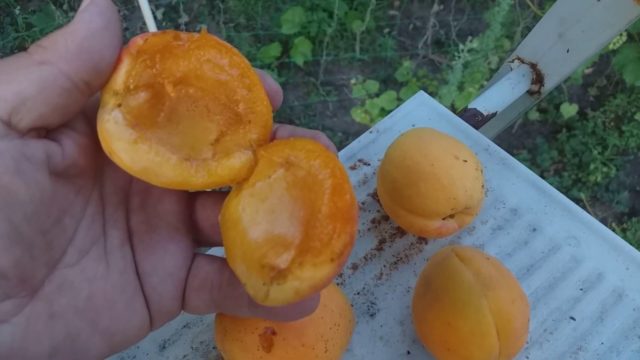
Seeds for planting should be taken from the ripest fruits
In mid-latitudes, "Manitoba" is grown from seedlings. This should be done in April, while the buds are still dormant. In the southern regions, it is better to plan planting for September-October.
Choosing a suitable location
The site for planting Manitoba apricot must meet the following requirements:
- sunny place – lighting is especially important in the morning;
- inaccessibility of winds from the north;
- elevation;
- the soil is light and well-drained;
- neutral acidity of the earth.
What crops can and cannot be planted next to apricots?
For successful apricot growing, the right neighbors are important. You can reduce the risk of soil depletion and diseases if there are no such crops nearby:
- pear;
- cherry;
- any nuts;
- raspberries;
- peach;
- Rowan;
- plum;
- currant;
- cherries;
- Apple tree.
Early flowers can be planted next to apricots. The proximity of any bushes and trees is undesirable.
Selection and preparation of planting material
When growing "Manitoba" from seedlings, the following points are important:
- Age 1-2 years.
- Well developed root system.
- No dry or frozen areas.
- The bark is brown or red-brown.
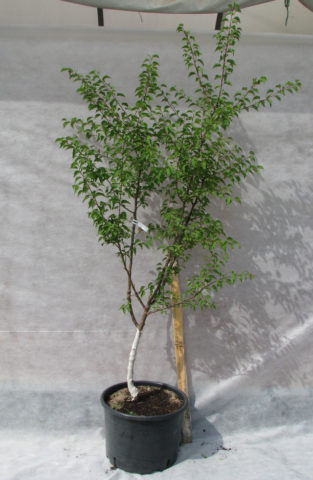
The tree is not afraid of severe frosts and is rarely affected by diseases.
If you plan to plant seeds in the spring, then they should be placed in sand in the fall and stored in the refrigerator. For such planting, it is enough to keep the material in the cold for about a day.
Landing algorithm
Planting holes are prepared in advance. For spring planting, this must be done in the fall; for autumn planting, at least 2 weeks in advance. The hole needs 0.6-0.7 m. There should be 3-4 m between neighboring seedlings, and 5-6 m in rows.
Landing algorithm:
- Place a layer of drainage – pebbles, expanded clay – at the bottom of the pit.
- Apply mineral fertilizers and organic matter - ammonium nitrate, superphosphate, potassium salt.
- Fill the rest of the area with soil with humus and peat, compact and water (3-4 buckets).
- Before planting, make a hole in the hole and carefully place the seedling in it so that the root collar remains on the surface. Sprinkle with soil and compact.
- Immediately tie the seedling to a stake.
- Water (3 buckets).
Subsequent care of the crop
Apricot "Manitoba" requires comprehensive care. One of the main measures is watering. It should be regular and plentiful - at least 50 liters of water per tree. It should be warmed up. Water is introduced into the tree trunk circle.
Seedlings need to be watered 2 times a month, adult trees at least 4 times per season:
- in spring with active shoot growth;
- before flowering;
- 2 weeks before the fruit begins to ripen;
- during pre-winter preparation.
Apricot does not like stagnant moisture. In rainy weather, the frequency and abundance of watering is reduced. If the summer is cool and with frequent precipitation, then humidification is not required.
Tree trunk circles must be regularly loosened and weeded. These measures provide access to oxygen and prevent the formation of crust on the soil.
One of the points of care is pruning. It is necessary to get rid of shoots that are too long, dried out and frozen.The crown should be up to 3-4 m in height and width.
At the end of April or beginning of May, be sure to check for wounds and frost holes on the trunks of apricot trees. If they are found, then the damage must be cleaned down to living tissue and treated with garden varnish.
Diseases and pests
Apricot "Manitoba" is resistant to fungal diseases, but can still be affected by them. One of the problems is moniliosis, also called monilial blight, or fruit rot. Cold and wet spring promotes the development of the disease. The problem is more often observed in the southern Urals, North Caucasus and central regions.
In May, the disease can be identified by fallen ovaries and flowers, in June by dried branches, and then by affected leaves and fruits.
The problem must be dealt with comprehensively:
- Trim and burn affected branches.
- Treat the trees with copper-containing preparations - Bordeaux mixture, Horus.
- Get rid of pests.
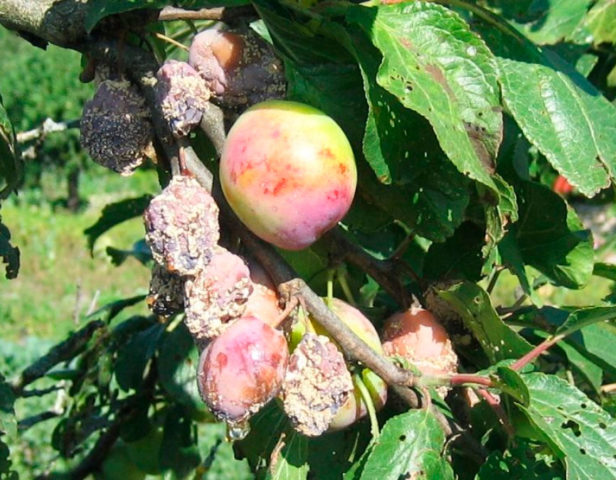
Monilial burn is dangerous for all garden trees; conidia of the fungus are carried by wind and insects
To prevent diseases, spraying is needed. In early spring and before flowering, copper-containing preparations are effective, and before bud break, Nitrafen is effective.
Among the pests, apricot "Manitoba" can be affected by aphids. It feeds on the juice of leaves and flowers.
You can fight the pest in different ways:
- drugs “Tanrek”, “Biotlin”, “Akarin”, “Fitoverm”;
- soap and soda solution;
- infusions of zest, garlic, hot pepper, pine needles, sorrel and chamomile.
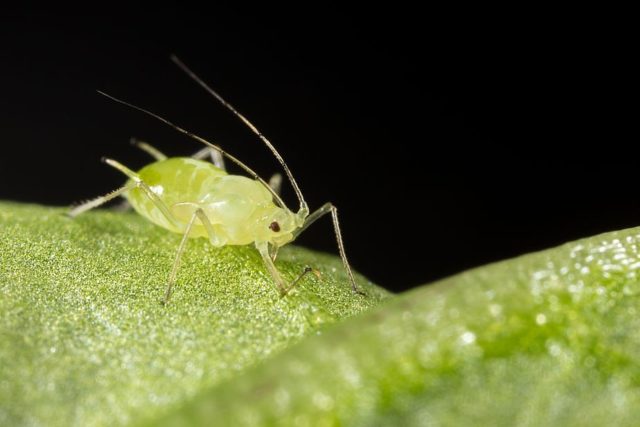
To combat aphids, you need to get rid of ants, their carriers.
Apricot "Manitoba" may suffer from beetleworms.Adult beetles feed on leaves and flowers, while larvae damage roots. Insects cannot tolerate the smell of lupine and mustard. Among the drugs that are effective are “Aktara”, “Zemlin”, “Antikhrushch”.
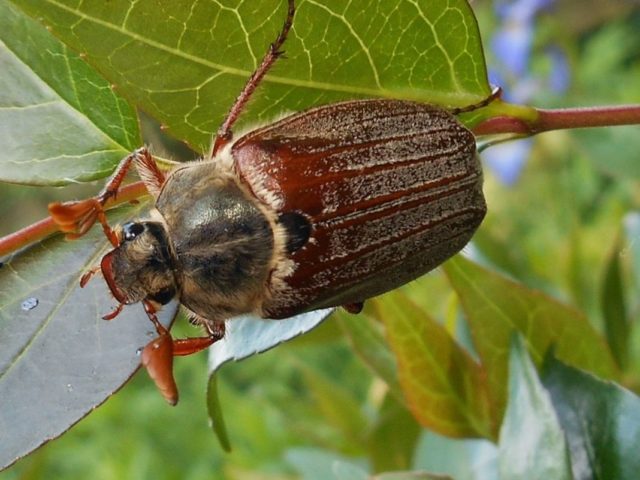
Khrushchev prevention is done by digging up the site in the fall.
Apricot "Manitoba" can also suffer from mice and hares that eat the bark. For winter protection, the trunks must be wrapped in durable material.
Conclusion
The description of the Manitoba apricot variety proves that growing it is easy and profitable. It produces a good harvest of large and tasty fruits that can be eaten fresh or processed. Caring for apricots should be comprehensive, all measures are standard.
Reviews of Manitoba apricot varieties

